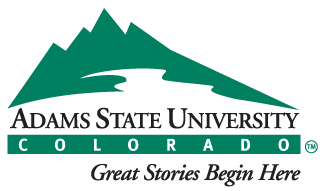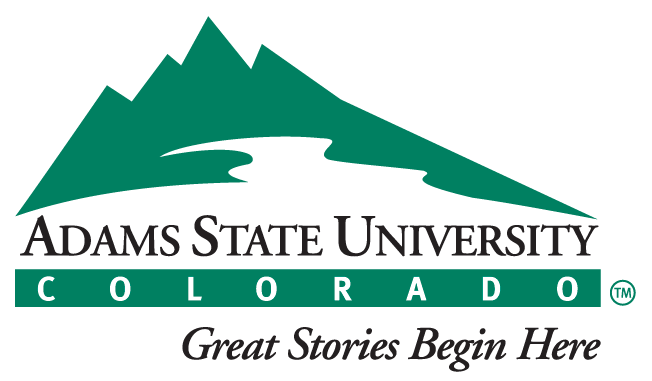Qualified San Luis Valley high school students will be eligible to receive federal Pell grants to attend dual-enrollment courses from Adams State University, through a new experimental project of the Department of Education. Adams State is the only Colorado institution selected as one of 44 colleges and universities nationwide to participate.
“This will allow us to reach Pell eligible students who otherwise would be unable to come to campus. Many area school districts do not have the resources to transport students to campus, or to cover their tuition costs,” said Walter Roybal, Adams State’s associate vice president for Extended Studies – Academics. He estimates about 400 valley students will be served through the program.
As part of the project, Adams State will use existing online courses and develop live, two-way video streaming models, so students can take courses during the school day at their own schools. They will earn both high school and Adams State credit, speeding progress toward a college degree while minimizing cost. All courses will meet Adams State academic standards and policies; general education courses will meet the requirements of the State of Colorado Guaranteed Transfer Pathways (gT Pathways) program, and will be applicable toward two-year associate’s and four-year bachelor’s degrees.
“This project will allow Adams State to extend our service as a Hispanic Serving Institution and support more students in achieving a higher education,” said Adams State President Beverlee J. McClure. “This is also another example of our partnerships with local school districts to improve outcomes for our students.”
The project has unanimous support from the local education agency, SLV BOCES (Board of Cooperative Services), as well as from all 14 San Luis Valley school districts. Nita McAuliffe, BOCES Executive Director and Director of Exceptional Student Services, said, “”What a privilege it is to have such a strong partnership with Adams State University so we can expand our opportunities for the students to participate in dual-enrollment courses. This will open doors for our districts and students to access the higher education pathway for increased student outcomes.”
The Department of Education notes a growing body of research suggests dual enrollment can lead to improved academic outcomes, especially for students from low-income families and first-generation college students, or those who are otherwise underrepresented in postsecondary education. Fewer than 10 percent of children born in the bottom quartile of household incomes attain a bachelor’s degree by age 25, compared to over 50 percent in the top quartile.[1] Many high school students-especially those from low-income backgrounds-lack access to the rigorous coursework and support services that help prepare them for success in college.
Building on the Obama Administration’s work to expand college opportunity, the Department of Education selected 44 postsecondary institutions to participate in this experiment that – for the first time – allows students taking college-credit courses to access Federal Pell Grants as early as high school. As part of this experiment, an estimated 10,000 high school students will have the opportunity to access approximately $20 million in Federal Pell Grants to take dual enrollment courses provided by colleges and high schools throughout the nation.
“Innovation is an important underpinning in our efforts to expand college access and increase college completion for our nation’s students,” said U.S. Under Secretary of Education Ted Mitchell. “We’re thrilled these institutions have joined us in answering the President’s call to reimagine the high school experience and create stronger linkages to college coursework. These sites will help us learn how the availability of Pell Grants impacts participation and success in dual enrollment programs.”
This program will provide students with academic preparation and credit accumulation, advising and other support services, and pathways to further their studies, as well as provide a teaching foundation for STEM and alignment with workforce needs. The dual enrollment experiment represents the next step in work to rethink how high schools educate students and prepare them for college and career through stronger partnerships between higher education and the K-12 space.


